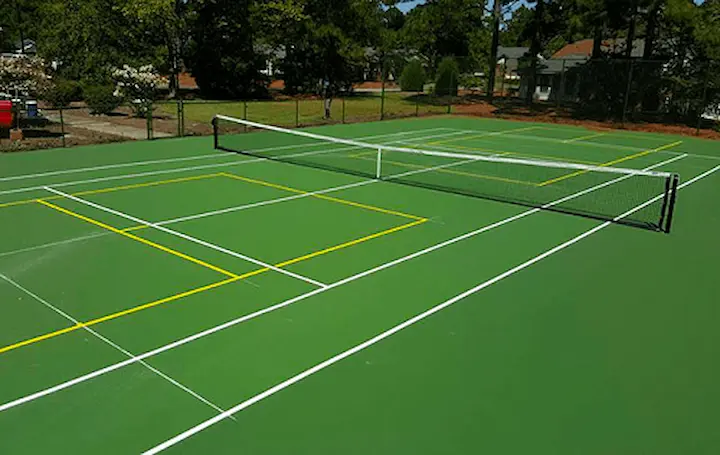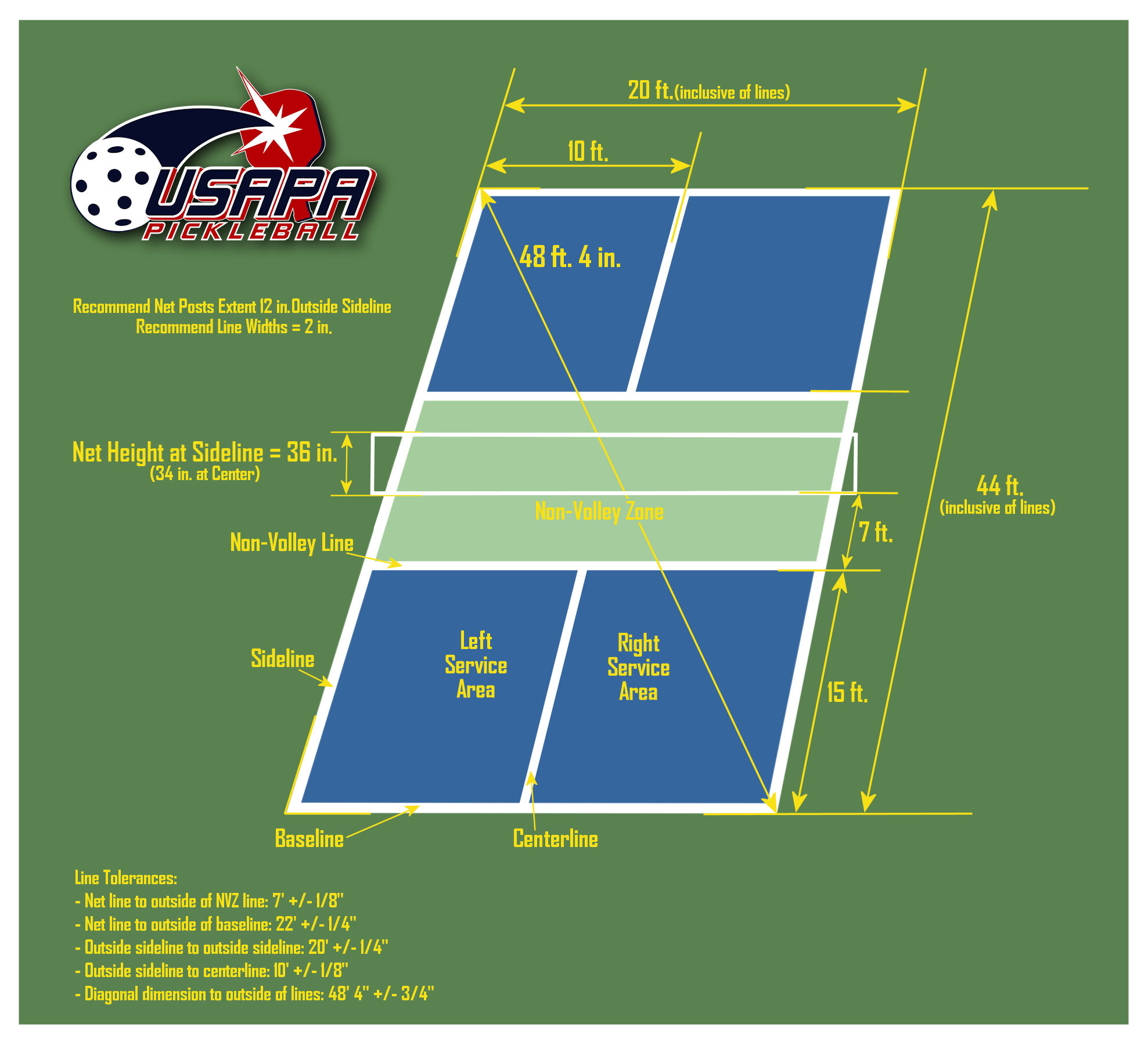Comprehensive Guide to Pickleball Judiciaries Style & Building And Construction in Illinois and Midwest
Secret Consider the Building of Pickleball Courts: From Site Option to Final Coatings
The construction of pickleball courts includes an array of essential factors, starting with the choice of an ideal website that balances access with environmental factors to consider. Necessary components such as court measurements, surface products, and drain systems considerably influence not just the quality of play yet also the long life of the center. Interest to lights and ending up touches can raise the overall experience for players and spectators alike. Recognizing how each of these components interrelates might reveal insights that are usually overlooked, prompting a closer exam of best methods in court building.
Site Selection Criteria
When starting the building and construction of pickleball courts, it is vital to pin down the website selection standards that will ensure optimum playability and access. The area should be easily reachable for gamers, preferably positioned near suburbs or area centers, to urge engagement.
Furthermore, the surface should be degree and steady, as uneven ground can result in safety hazards and influence gameplay. Ample water drainage is also important; choosing a website with great water runoff will certainly help keep court problems during adverse climate.
One more crucial consideration is the schedule of energies. Accessibility to electrical energy and water is required for lights and upkeep functions. In addition, proximity to auto parking centers is vital, promoting very easy accessibility for players and spectators alike.
Environmental aspects can not be forgotten; natural color from trees can boost gamer comfort, while exposure to prevailing winds might disrupt play. Zoning policies and area support must be considered to make certain that the job aligns with local standards and gets the support it needs for effective application. By carefully assessing these criteria, stakeholders can develop a welcoming and functional environment for pickleball lovers.
Court Capacities and Layout
To make certain ideal gameplay and adherence to policies, the dimensions and format of pickleball courts have to be carefully defined. A common pickleball court determines 20 feet in width and 44 feet in size for both singles and doubles play. The suggested design consists of a non-volley area, typically described as the "kitchen area," extending 7 feet from the net on either side. This location is critical, as it affects gamer positioning and shot choice - Illinois and midwest.
The internet elevation is evaluated 36 inches at the sidelines and 34 inches at the center, producing a small dip that affects sphere trajectory. Court markings are similarly crucial; lines ought to be 2 inches vast and distinctive in color to ensure presence.
Additionally, a barrier zone surrounding the court is recommended, usually expanding 5 to 10 feet past the sidelines and baselines to accommodate gamers' motions and boost safety. Appropriate layout and dimensions not only guarantee conformity with main policies but additionally boost the total having fun experience, suiting both entertainment and competitive play. Careful planning in these locations is vital to the successful building of pickleball courts.
Surface Area Product Options
Picking the appropriate surface area material for pickleball courts is crucial for making certain optimal gamer performance and security. The choice of surface can substantially affect gameplay, including round bounce, grip, and gamer comfort.
There are numerous choices offered, each with its unique qualities. Asphalt is a preferred selection because of its sturdiness and reduced upkeep demands. It provides a solid playing surface area that Visit Website can withstand numerous climate condition yet may call for periodic resurfacing.
Concrete is an additional extensively used product, providing excellent longevity and a smooth coating. It enables constant sphere bounce however can be tough on gamers' joints, making it less desirable for long-lasting play without appropriate cushioning.
For those seeking improved convenience and shock absorption, look at this web-site supported acrylic surface areas offer a sensible choice. These surface areas incorporate a base layer with an acrylic topcoat, providing improved grip and a softer feel, which is beneficial for decreasing the danger of injuries.
Finally, artificial turf is getting traction, especially for multi-purpose centers. Its adaptability and lower maintenance needs make it an eye-catching alternative, though it might not give the same ball action as typical tough courts. Mindful consideration of these choices will certainly make certain an optimum playing setting.
Drain and Lighting Factors To Consider
Proper water drainage and reliable illumination are necessary elements in the construction of pickleball courts, significantly affecting both playability and safety and security. Appropriate drain systems prevent water build-up, which can result in unsafe surfaces and damages to the court structure. A well-designed water drainage plan includes sloped surfaces and suitable materials to facilitate water flow far from the playing area - Illinois and midwest. This not only maintains the stability of the court yet also lessens downtime due to poor climate condition.
Illumination is equally important, particularly for courts planned for night use. Correct illumination boosts exposure, making certain that players can see the ball plainly his comment is here and minimizing the risk of accidents. The positioning of illumination components need to be tactically intended to get rid of darkness and offer even circulation of light across the court. LED lights are recommended for their power efficiency and long life, providing intense illumination while lowering functional expenses.

Final Finishes and Upkeep
After addressing drainage and lighting considerations, focus turns to the final finishes and recurring upkeep of pickleball courts. Common choices consist of acrylic layers and specialized sports surfaces that offer optimum grip and cushioning.

Seasonal upkeep may include resurfacing every few years, relying on use and ecological variables. Appropriately keeping webs, court lines, and surrounding locations is equally essential to offer a risk-free and delightful having fun experience. By spending in top quality coatings and sticking to a structured upkeep routine, facility proprietors can guarantee their pickleball courts stay in outstanding condition for several years ahead.
Final Thought
In final thought, the effective building and construction of pickleball courts hinges on precise focus to numerous vital factors. Top quality coatings and a durable upkeep schedule are vital for protecting the court's condition, improving the total experience for gamers and spectators alike.